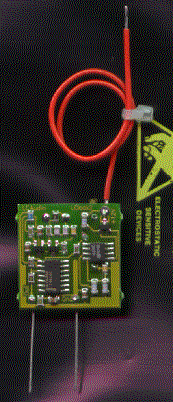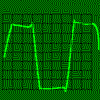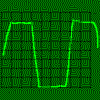LClock2-C2 Precision CD Reference Clock Generator.
Don't waste money buying a new CD player, because Your'e not satisfied with the Sound Quality of the one You have.

This PC board with a precision clock generator can improve almost any CD player from the cheapest to the most costly. - Why?
99% of all CD players on the market are equipped with a cheap CMOS crystal
Oscillator, with a high level of analog input noise. Since a crystal oscillator
only requires one single inverter to work, most CD makers use the other
5 inverter gates in the 74HCU04 IC for other purposes, such as switching
and buffering. However, this causes switching noise on the supply rails,
and since the analog trigger level of a gate is one half the VCC voltage,
half of the switching noise is transferred directly to the input of the
Crystal Oscillator.
This creates JITTER, one of the most unfreindly phenomenon in digital
audio equipment. Sound will be harsh and Stone Cold. Sound Stage is narrow,
and uninteresting, music becomes what is known as: DIGITAL!
This is what the clock signal in Your CD player looks like:
Now:  ...compare with the signal of an LClock2:
...compare with the signal of an LClock2:
In CD's with a signal processor - integrated crystal oscillator, (Such as the SAA7345, SAA7220 or NPC SM5864) there are not only 5 other gates creating jitter, but hundreds, making the problem even worse.
CD producers like SONY, Arcam, Kenwood, Pioneer and Rotel are becoming
aware of how serious the Jitter problem really is, but still they are not
solving the problem adequately. In their 1998/99 models these manufacturers
all use cheap CMOS or transistor oscillators with standard high-noise voltage
regulators and cheap 50 c crystal units.
We use only fine handcut precision crystals, ultra lownoise regulators
and GHz high frequency transistors for LClock2.
That makes a difference!
The LClock 2 is a small SMD Circuit to fit into Your CD player, and
it is a very cost effective way to improve the sound of almost any CD player,
no matter the price level.
This is what it does to sound:
- Firmer and more distinct Bass.
- Wider, deeper and higher soundstage.
- Better definition and placement of instruments in a multiinstrument session.
- Cleans up hairy treble performance.
Technical Data Sheet:
| Frequencies | Precision | |
| 8.4672 | 2 ppm. | MHz |
| 11.2896 | 2 ppm. | MHz |
| 16.9344 | 2 ppm. | MHz |
| 22.5792 | 2 ppm. | MHz |
| 33.8688 | 2 ppm. | MHz |
| 45.1584 | 2 ppm. | MHz |
| Jitter Level | 12 | ps (max.) |
| Power Supply Noise | 2.8 | uV (max.) |
| Power Supply Rejection | 86 | dB (max.) |
| Power Supply Influence on Frequency | 0,01 | ppm / Volt(max.) |
| Current Consumption | 10-20 | mA |
| Supply Voltage Range | 7.5 - 20 | Volts DC |
| Thermal Performance | 10 - 50 | deg. C |
| Size | 25 by 25 | mm. |
But Maybe You don't bother with these technical terms, and - like more than 1000 other music-addicts in Scandinavia and abroad - just want to get the wide musical perspective, the high definition and the firm, distingtive bass reproduction Your CD player can only offer with an LClock upgrade.
Send us an E-mail with Your particular CD player model, and we will supply You with details, such as frequency, connection points, and how much skill it would take to fit LClock in the machine.
Remember, if You have just a little experience with electronics or have a freind with a few skills, this would be adequate to get Your machine upgraded to supreme performance. Its easy and it takes only 15 to 20 minutes on most models.
Installation Instructions :
What is the procedure for installing an LClock?How is the LClock installed in my particular model?